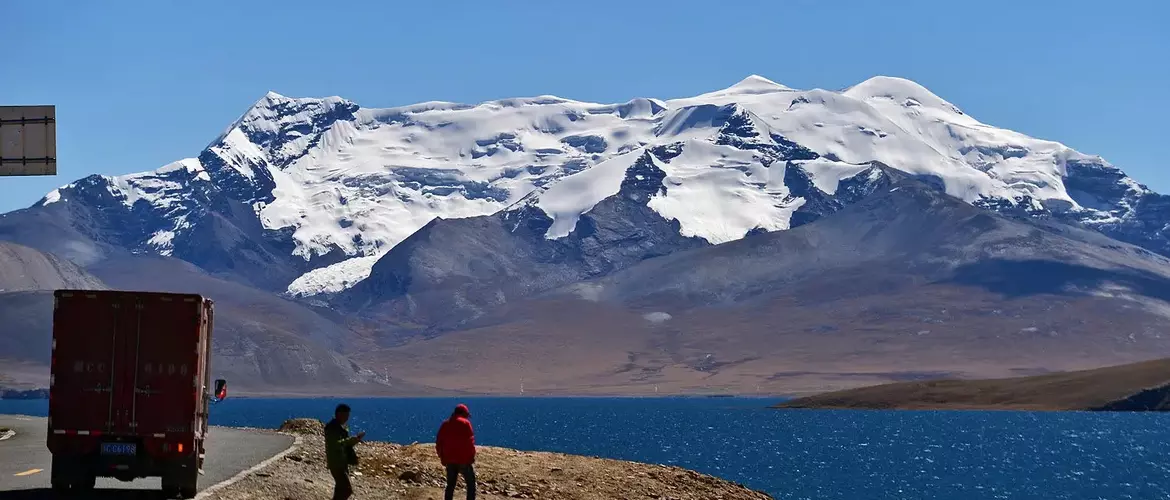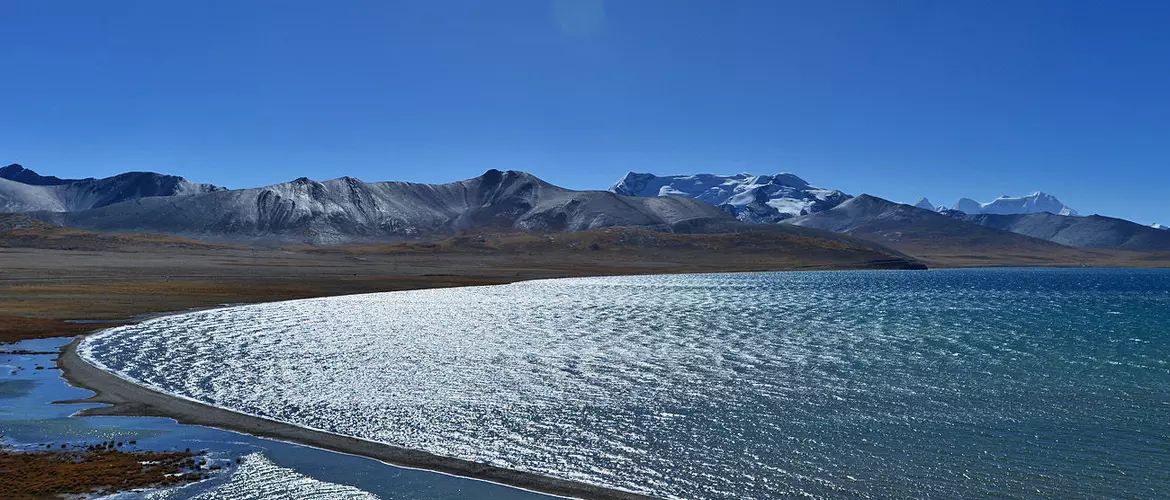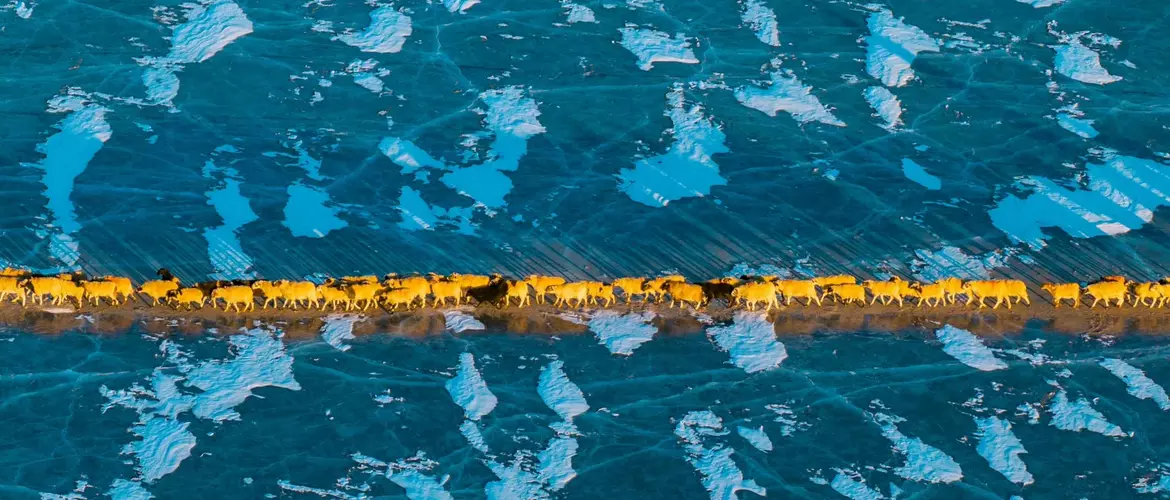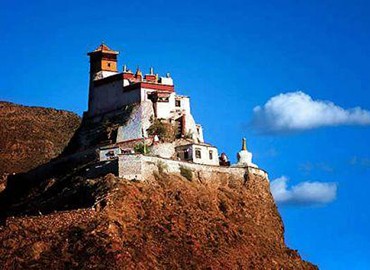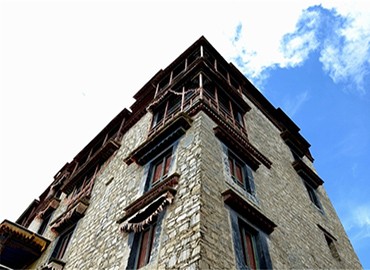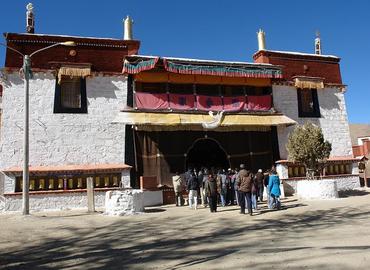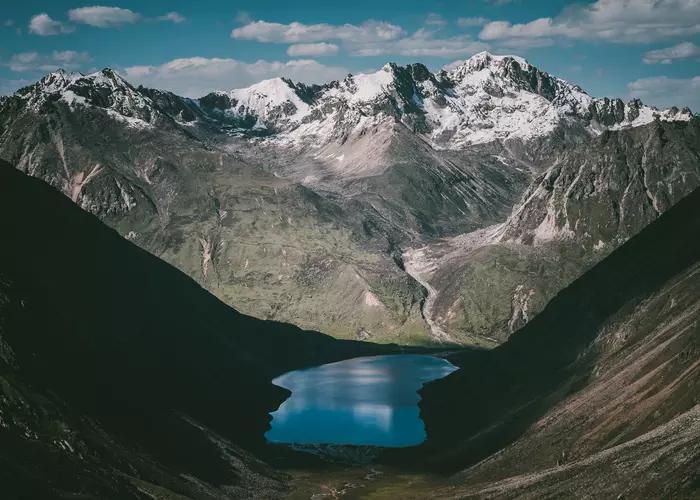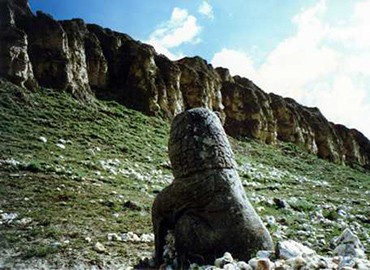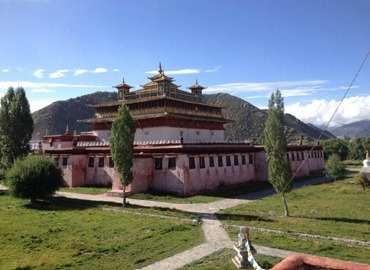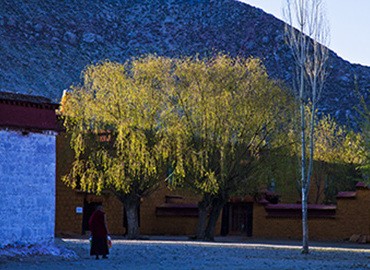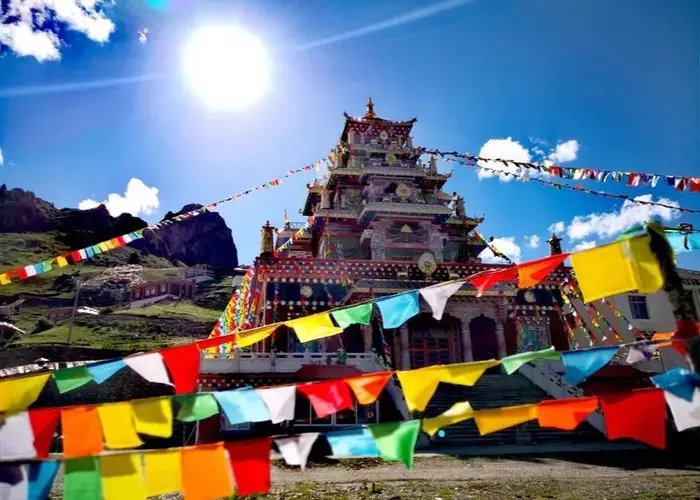Phuma Yumtso is located in the Tibet autonomous region, 210 kilometers from Lhasa, at the border of Lhozhag and Nagarze counties in the Shannan region. With an altitude of 5010 meters, it covers 295 square kilometers. It is 32 km long, and 14 km wide. It is like a pearl in the wild with primitive and tranquil beauty.
"Phuma" means little girl in Tibetan, and "Yumtso" means a lake like a jasper in Tibetan. The lake is highly transparent. Phuma Yuntso is surrounded by rolling snow mountains, and the towering sacred Kula Kangri Mountain(7,538 meters) is next to this lake. The Kula Kangri Mountain is combined by three high peaks, and there are about 6 peaks with an altitude of over 7,000 meters nearby. The water source of this lake mainly comes from the snowmelt of Kula Kangri Mountain in the south. At the western end of the lake, some sediment can be seen entering the lake. And, the outflow flows eastward through a short river into the Yamdrok Lake.
In theory circles, the lake is usually considered to be an ultra-oligotrophic type lake, which means that nutrient concentrations in both water and lake sediments are very low. Because of the lower levels of photosynthetic organisms such as phytoplankton, the water in the lake tends to be blue-blue-green and more transparent. The island in the lake is like a giant turtle, quietly guarding the lake. It is said that the Phuma Yumtso was blessed by Padmasambhava and thus had a divine aura. The inhabitants of the nearby Tuiwa Village subsist on fishing, hunting, and grazing in and around the lake. In winter, the pasture of Tuiwa Village cannot provide sufficient pasture for the sheep, while the island in the middle of the lake in Phuma Yumtso has abundant pasture. Therefore, during the freezing period of the lake, villagers will drive the sheep to the island, and then drive the sheep back to the village before the lake thaws.
As the climate warms, the ice becomes thinner and thinner, which will bring some troubles to the local residents. However, the freezing of Phuma Yumtso also created a kind of fantasy scene of blue ice and ice crack patterns on the surface. The ice crack patterns of diameters range from less than 10 meters to hundreds of meters. Standing on the thick ice and listening to the roar of the sacred lake can be an unequaled experience. Looking down through the ice, the water in the holy lake is dark green, and frozen bubbles reveal the life of the lake.
Little was known about the mysterious lake before it was given access. Now the asphalt road has been completed, more and more people visit it. But, at present, there is no bus to this place, and the best way to get there is by chartered car from Lhozhag.
Email response within 0.5~24 hours.


